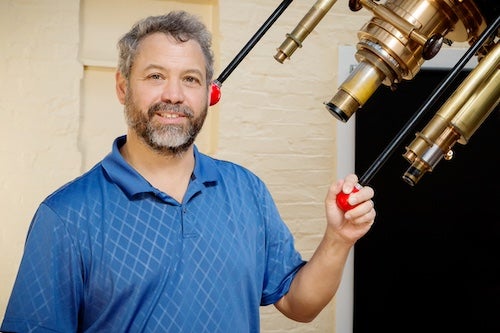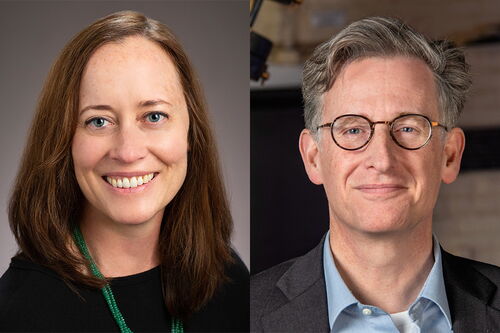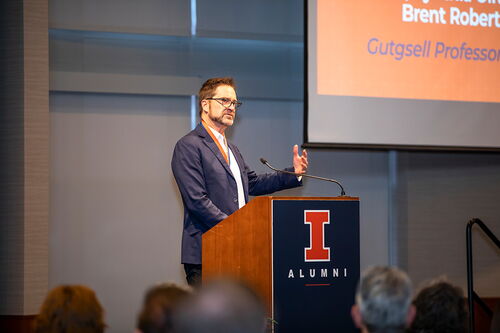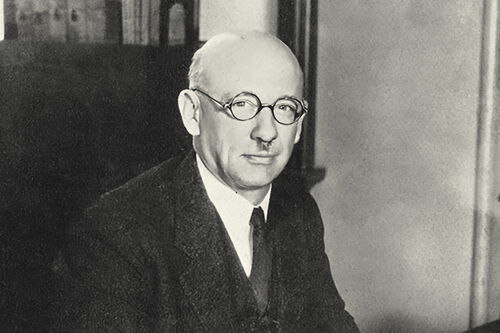Expert advises eclipse watchers to get the best vantage point – are you ready?
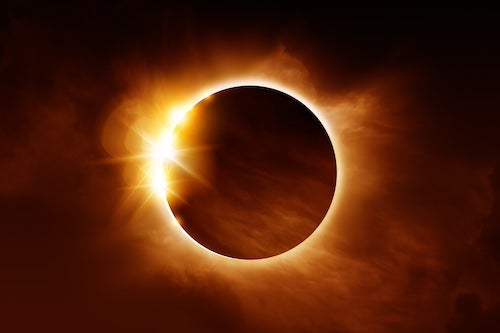
Leslie Looney is an astronomy professor and director of the Laboratory for Astronomical Imaging. He spoke with News Bureau physical sciences and media editor Lois Yoksoulian about the significance of solar eclipses and what to expect on April 8.
There are many different types of solar eclipses: What kind will North America witness in April?
There are two main types of solar eclipses (when the moon blocks some or all of the sun) – a total solar eclipse and a partial solar eclipse. On April 8, many places in North America will witness an amazing total solar eclipse – one of the most impressive sights you will ever see in the sky. But only those within the path of totality (about 115 miles in diameter) will be privileged; otherwise in the continental U.S., you will only see a partial solar eclipse, where only a portion of the sun is blocked out. Partial solar eclipses are interesting, but they pale compared to totality. If you can do it, try to get to the path of totality. It is worth it.
How do scientists predict eclipses and their paths?
Humans have been predicting solar eclipses for nearly three centuries. The Babylonians realized that eclipses follow a pattern, which they were able to recognize and use to predict them. Today, scientists know precisely the orbits of the Earth and moon and can predict extremely accurate eclipse paths and times. We can predict them thousands of years in the past or the future now.
What do scientists study during solar eclipses? Are there any unique opportunities?
During a total solar eclipse is the only time that we can see the sun’s corona – the outer atmosphere of the sun. When the moon blocks out the bright solar surface, we can see the beautiful outer layers of the sun's atmosphere and their wispy structures. Scientists can use this time to study the corona and better understand how the sun powers our solar system. We do have space telescopes that can also view the corona (using instruments that block the solar surface), but total eclipses allow new ideas to be tested quickly.
How long will the eclipse last, and what can we expect to experience?
You can expect just about 4 minutes of totality in Illinois at the center of the path, which is more than in 2017. The more time in totality the better – it amplifies the effect. In totality, the moon completely covers the sun and you are standing in the shadow of the moon! This creates an eerie pseudo-sunset and then weird darkness, revealing stars and planets (and maybe a comet if we are lucky) in the daytime and the ghostly solar corona. These, along with a small temperature drop and the confused quiet of birds and animals, combine to provide the most exciting few minutes in astronomy.
When will the next total solar eclipse happen in North America?
The next total solar eclipse visible in the continental U.S. will be in 20 years! And it will only be visible in Montana, North Dakota and South Dakota on August 23, 2044. If you wait until the following year on August 12, 2045, then another great American eclipse path will happen from north California to south Florida.
How can we view the eclipse safely?
Staring at the sun is bad for your eyes, and you can permanently damage them. Do not stare at the sun no matter if it is partially eclipsing or not. Do not use sunglasses to look at the sun – that is even worse than using your naked eyes. You must use eclipse glasses, which block 100% of the harmful ultraviolet light and 99.999% of intense visible light. However, during totality you will not need any eye protection – take in the beauty of the event. The moon is blocking all the dangerous light during totality. But, once any sunlight pokes through, the eclipse glasses have to go back on.
Is the University of Illinois Urbana-Champaign hosting any special events?
